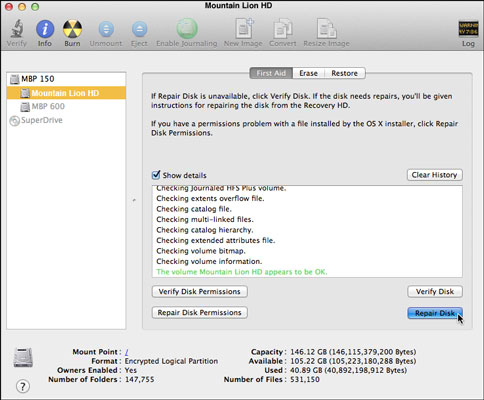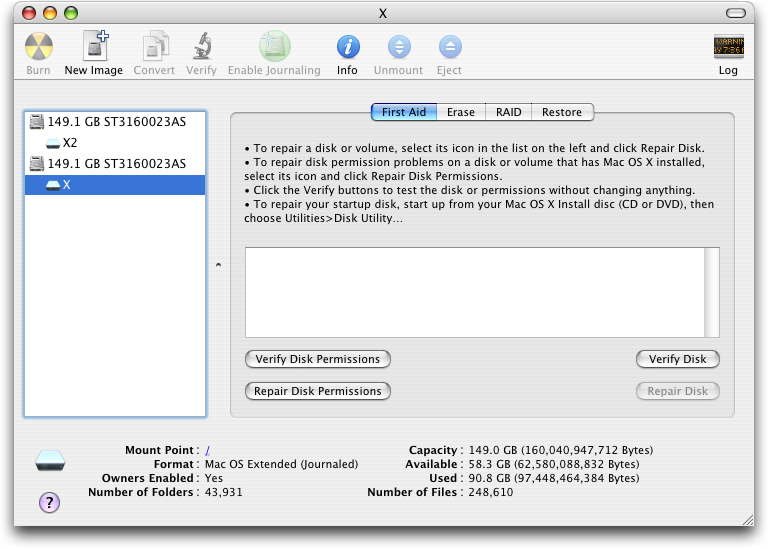How To Find Disk Utility On Mac

Open Disk Utility (in Applications Utilities, or cmd+space Disk Utility). Select the volume you wish to run First Aid on. This could be a external hard drive (if it’s your own Mac hard drive you. Find Disk Utility by opening Spotlight (cmd+Space-bar) and start typing Disk Utility, press enter to open the program. Look in the column on the left to see if the hard drive appears there. Now I need Disk Utility (or so I believe) to repair permissions on my drive and get me back to my mac-filled bliss. Popchar 7 2 – floating window shows available font characters. Which brings me back to the main question: Where can I download it? Whether you've read the short or the long, I hope you can point me in a good direction, or help me in some way.
Problem: Your Mac OS Extended volume should have its journal turned on, but for some reason, it does not. Now you are at greater risk for data loss if your machine crashes or your hard drive loses power. How can you re-enable journaling for your volume?
Solution: Starting with Mac OS X 10.2, Apple added support for Mac OS Extended journaling. Since Mac OS X 10.3, the option to use the journal is turned on by default, which means your Mac’s hard drive is journaled, unless you have specifically disabled this feature.
When a hard drive has a journal, it writes (in the journal file) the changes it is about to make to the special files and then makes the changes. It is like having a backup of the list of changes that need to be made. That way, if the computer crashes or loses power while writing to the special files, they are not irreversibly damaged. Instead, the hard drive reviews the journal entries, and when it sees that the current contents and locations of the special files do not match what is in the journal, it reverts the special files to a previous journal entry. This does mean that the last file being written is lost or corrupt, but this would have been true even without the journal. With the journal, your remaining files are intact.

Manually turn journaling on in Apple’s Disk Utility:
- From the disk pane on the left side of the window, select the name of the volume on which you wish to enable or disable journaling.
- Select the green icon on the Disk Utility toolbar, called “Enable Journaling.” If the icon is grayed out, this means the volume is either already journaled or does not offer that feature.
- (If the green icon “Enable Journaling” does not appear on toolbar, right-click on some empty space in the toolbar, select “Customize Toolbar” from the contextual menu, and add the icon to your toolbar.)
You cannot use Disk Utility to enable the journal on the volume used to boot Mac OS X. This means if you want to enable the journal on your internal hard drive, you must boot from another disk that contains Mac OS X, such as a recovery partition or installation DVD. Apple website editor.

Disk Utility Mac Download
Turning journaling on is as simple as a mouse click in Disk Utility Mac cordless tools.
Mac Os Disk Utility Download
You cannot disable a volume’s journal from Disk Utility. To disable a volume’s journal, run the following command from a Terminal shell:
diskutil disableJournal /dev/diskXsY
(where X is the disk number and Y is the disk’s slice/volume number)

How To Find Disk Utility On Mac
UNDER MAINTENANCE